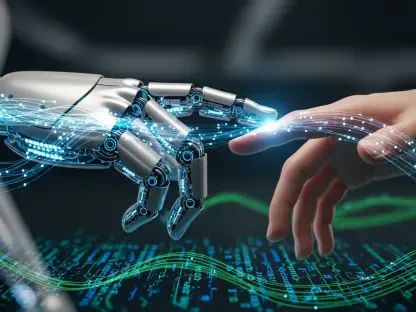Short introductionMeet Anand Naidu, our resident development expert with a wealth of knowledge in both frontend and backend programming. With a deep understanding of various coding languages, Anand brings unique insights into the world of AI-assisted tools for data analysis. Today, we’re diving into a conversation about Databot, an innovative and experimental tool designed for R and Python users. We’ll explore its origins, standout features, integration capabilities, and the challenges it faces as it evolves into a partner for data scientists.
How did the idea for Databot come about, and what makes it different from other tools in the data analysis space?
The idea for Databot stemmed from a desire to create something more interactive and collaborative than existing tools. Many data analysis tools at the time felt like static utilities—useful, but not engaging. We wanted Databot to feel like a partner, something that could proactively suggest ideas and help guide the analysis process. Unlike other tools that often just execute commands, Databot analyzes the data in your session and offers questions or directions you might not have considered. It’s about sparking curiosity and exploration, which sets it apart.
What specific challenges or gaps in data analysis did you aim to tackle with Databot’s development?
One big gap we noticed was the lack of tools that truly assist with ideation in data analysis, especially for R users. Many AI tools lean heavily toward Python, leaving R users with fewer options for generative code and insights. We also saw that users often struggle with knowing where to start or what to ask when faced with a dataset. Databot addresses this by not just answering queries but also proposing meaningful questions and analyses, helping users uncover insights they might have overlooked.
In what ways does Databot act more like a partner than a traditional tool for data scientists?
Databot goes beyond simply responding to commands—it actively engages with the user. For instance, when you load a dataset, it doesn’t just sit there waiting for instructions. Instead, it looks at the data and suggests potential analyses, like creating a histogram or exploring correlations between variables. It’s almost like having a colleague brainstorming with you, offering ideas based on the data’s structure and content. This interactive approach makes the analysis process feel more collaborative.
Can you describe how Databot’s interaction style differs from other AI chatbots you’ve encountered?
Most AI chatbots are reactive—they wait for you to ask a question and then provide an answer. Databot, on the other hand, takes a proactive stance. It initiates the conversation by suggesting next steps or visualizations based on the data it sees. This isn’t just about answering; it’s about guiding. Also, its focus on writing and running code directly in R or Python within your session makes the interaction more seamless and tailored to a data scientist’s workflow compared to generic chatbots.
What are some of the standout features of Databot for users working in R or Python?
One of the key features is its ability to generate code for specific analyses directly in your R or Python environment. For example, if you’re curious about the distribution of a variable, Databot can suggest a histogram and write the code to create it. It also provides observations about the output, like noting patterns or outliers in the data. This dual role of coding and interpreting is especially valuable for users who might not be experts in visualization or statistical analysis.
How does Databot handle data visualizations, and what’s an example of this in action?
Databot excels at simplifying data visualization by both suggesting and creating plots. Take a dataset of NFL game scores, for instance. If you ask for a visualization, Databot might propose a histogram of total scores to show the distribution. It then writes the R or Python code to generate the plot and even offers insights, like pointing out if the distribution is bell-shaped or if there are notable outliers. This makes it easy for users to see and understand trends without needing to craft the code themselves.
Since Databot is still experimental, what are some limitations users should be aware of when using it?
Being experimental, Databot is still a work in progress, and it can be somewhat fragile. This means it might not always handle complex datasets or unexpected inputs gracefully. Sometimes, the code it generates may not work as intended, or it might misinterpret the data’s context. Users should expect occasional hiccups and be ready to review or tweak the outputs. It’s powerful, but it’s not yet polished to the level of more mature tools.
How does Databot integrate with the Positron IDE, and what advantages does this bring to a data scientist’s workflow?
Databot is available as an add-on for the Positron IDE, which makes it incredibly convenient for data scientists already using this environment. The integration allows you to access Databot directly within your workspace, so there’s no need to switch between tools. This streamlines the process of importing data, running analyses, and reviewing code or visualizations, all in one place. It saves time and keeps your focus on the analysis rather than juggling multiple platforms.
Why was Anthropic’s Claude Sonnet 3.5 chosen as the underlying model for Databot, and what benefits does it offer?
We chose Claude Sonnet 3.5 for its strong language understanding and ability to generate coherent, context-aware responses, which are crucial for a tool like Databot that needs to suggest meaningful analyses. It also handles technical tasks like code generation quite well, which is essential for working in R and Python. This model helps Databot deliver accurate and relevant suggestions, making it a reliable starting point for our experimental phase, even if it’s not perfect.
What is your forecast for the future of AI-assisted tools like Databot in the field of data analysis?
I think tools like Databot are just the beginning of a major shift in how data analysis is done. In the future, I see AI becoming an even more integral part of the process, not just suggesting ideas but also learning from user feedback to personalize workflows. We’ll likely see improvements in handling complex datasets and integrating with a wider range of platforms and languages. The goal is to make data science more accessible, allowing even non-experts to derive insights with the help of AI partners. I’m excited to see how this space evolves over the next few years.








